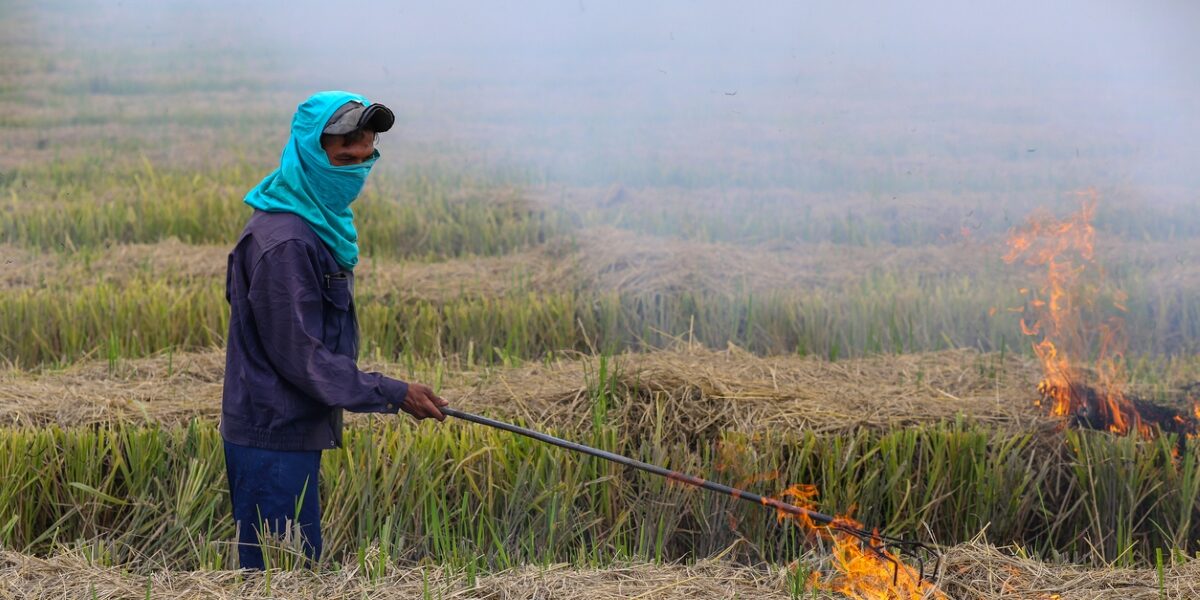Instances of farm fires crossed the 2,000 mark on 8 November, and the government has issued a fresh warning, saying FIRs will be registered against the violators.
Published Nov 09, 2023 | 4:05 PM ⚊ Updated Nov 09, 2023 | 4:06 PM

Stubble burning. (iStock)
Even as heavy atmospheric pollution continues to stifle Delhi, Punjab has so far registered only 18 cases of stubble burning till 6 November.
Instances of stubble burning crossed the 2,000 mark on Wednesday, 8 November, and the state government issued a fresh warning to violators that FIRs would be registered against them.
Interestingly, the Sangrur district, where Chief Minister Bhagwant Mann’s Dhuri Assembly constituency is located, accounted for 466 farm fires on Wednesday, but not even a single FIR was registered.
Bathinda reported 221 stubble-burning instances the same day, followed by Barnala with 216, Faridkot with 150, Mansa 131, Patiala with 106, Ferozepur 103, Muktsar 100, Ludhiana 96, Jalandhar 90 and Moga 89.
Of the total 22,981 farm fires recorded from 15 September till 8 November, Sangrur accounted for the highest number of cases with 4,070, followed by 2,176 in Ferozepur, 1,888 in Tarn Taran, 1,719 in Mansa, 1,524 in Patiala, 1,454 in Amritsar, 1,436 in Bathinda, 1,129 in Barnala, 1,089 in Ludhiana and 1,014 in Faridkot.
Following the directions of the Supreme Court, the state authorities have asked District Magistrates and CPs/SSPs to jointly hold a review meeting on the issue daily after receiving the data on farm fires.
During this meeting, village-wise and Station House Officer (SHO)-wise situation of stubble burning would be reviewed. If any stubble-burning incident was found, prompt disciplinary action would be initiated against the violator.
It has also been decided that erring farmers would be told that FIRs would be registered since burning of stubble violated the law.
A total of 12 instructions have been issued. Police patrol parties, under the direct command of the area SHOs, would stop stubble burning. Cluster teams, constituted earlier in each district by the DCs, have been asked to coordinate with the police and civil administration teams.
Each district would be divided into sectors, and a gazetted-ranked police officer would be in charge of each sector. The District Magistrate and the SSP have been asked to conduct regular personal field visits. The DCs and SSPs have also been instructed to utilise alternative arrangements for in situ and ex-situ stubble management.
Punjab AAP chief spokesperson Malvinder Singh Kang while talking to South First said, “Stubble-burning incidents were reduced by 30 percent last year; it has further declined by 40 percent this year.”
He further said, “We don’t want farmers to engage in stubble burning, but due to lack of alternatives, some farmers set stubble on fire. The AAP has taken many initiatives to stop the menace, which have yielded results. Penalisation should be the last resort.”
Speaking of assisting the famers, the AAP spokesperson said, “Last year we had proposed to the Union government for 50 percent assistance in creating a monetary fund so that we may offer ₹2000-3000 per acre to the farmers to create manure out of the stubble and utilise it.”
Kang further said, “The same has now been mooted by the Supreme Court, which also has proposed to create a special fund for crop diversification.”
Speaking of measures, he said, “We have already started taking steps and have banned the PUSA-44 variety of paddy as it took a long time to ripen, and as a result, farmers were burning the residue as they got limited time to sow wheat. Here we are encouraging Basmati, and the area has increased from 5 lakh hectares to 6 lakh hectares.”
